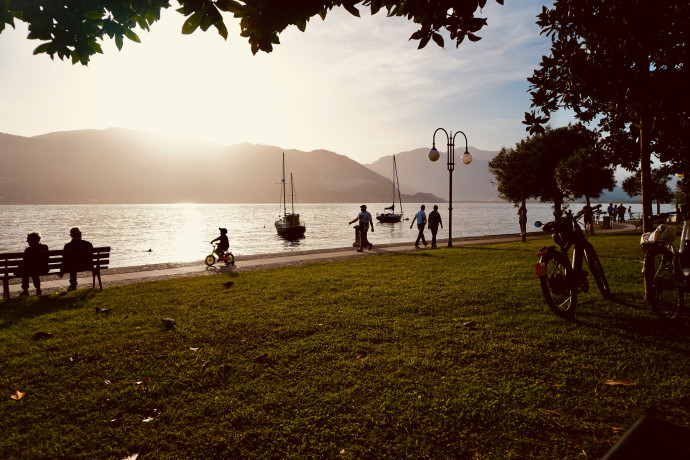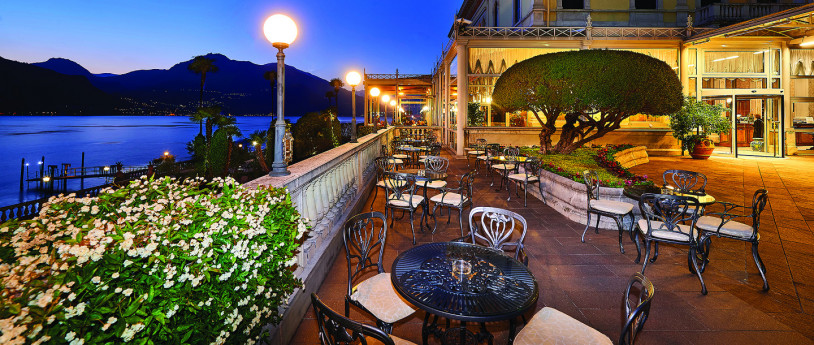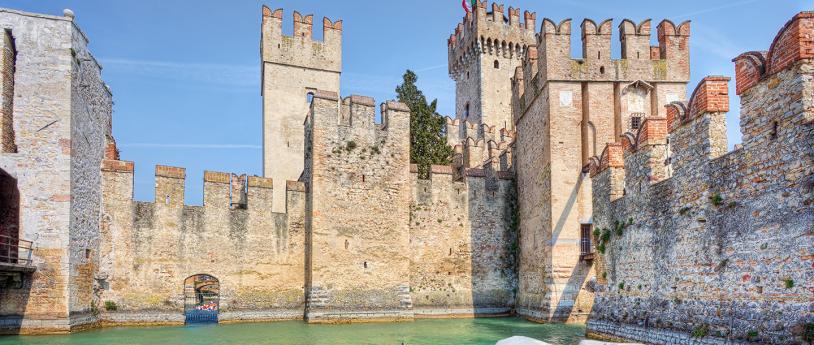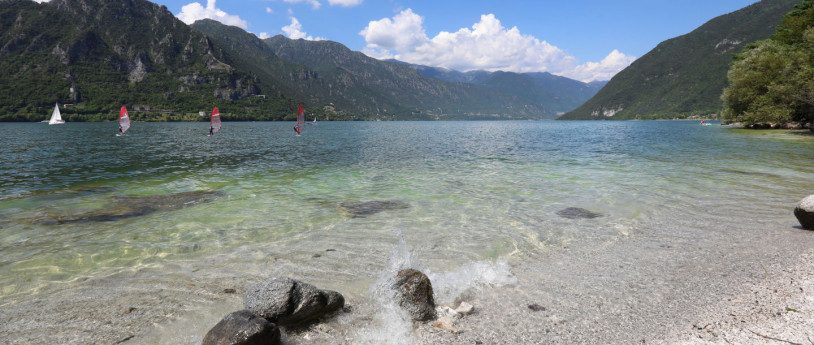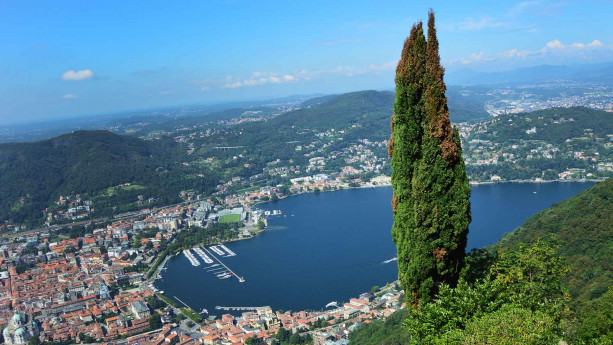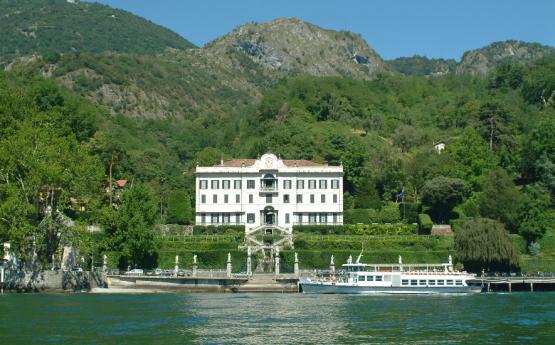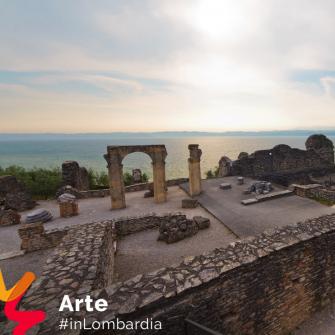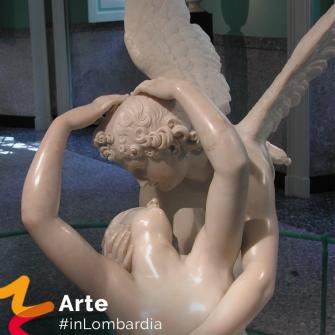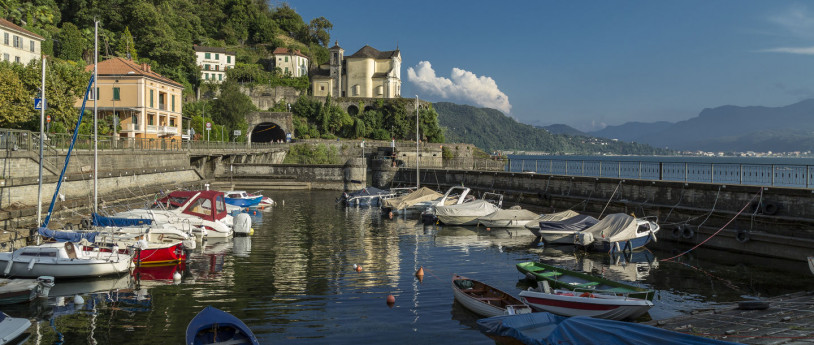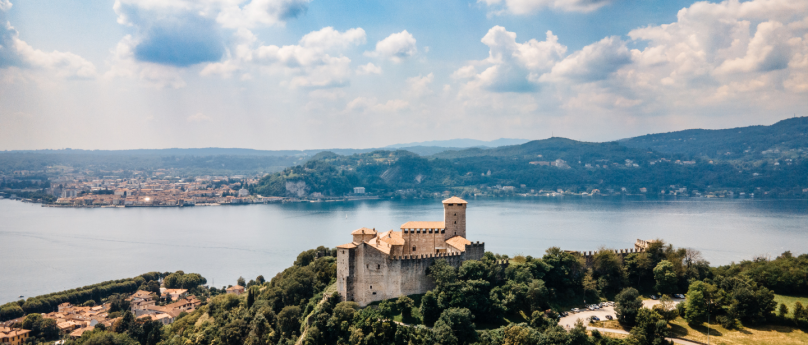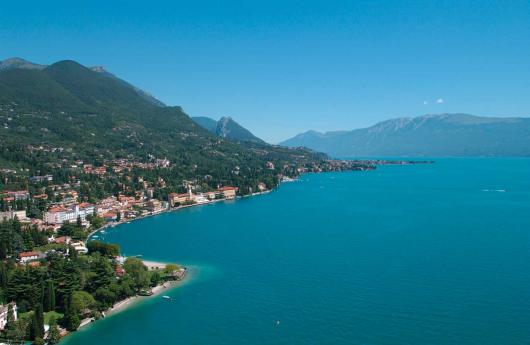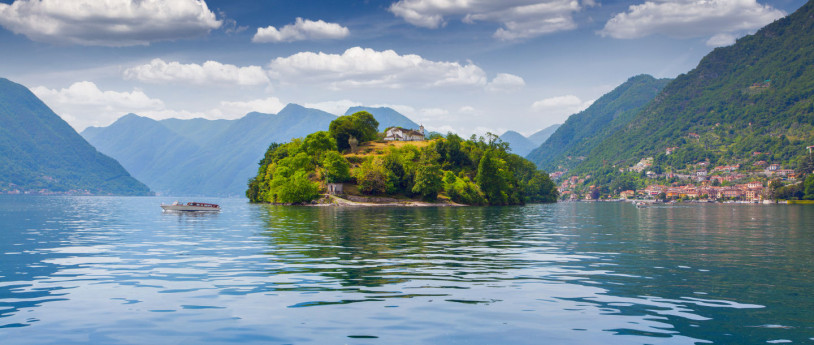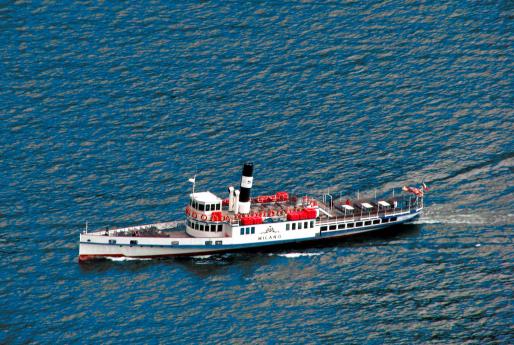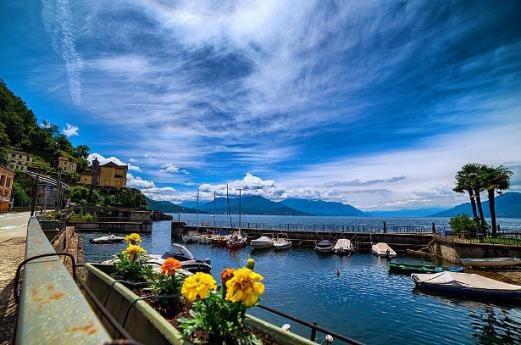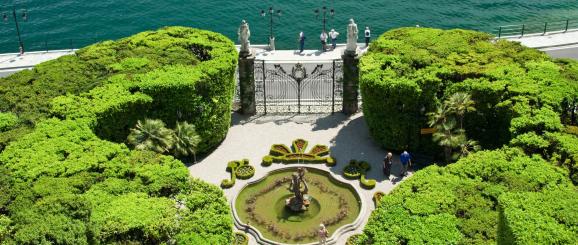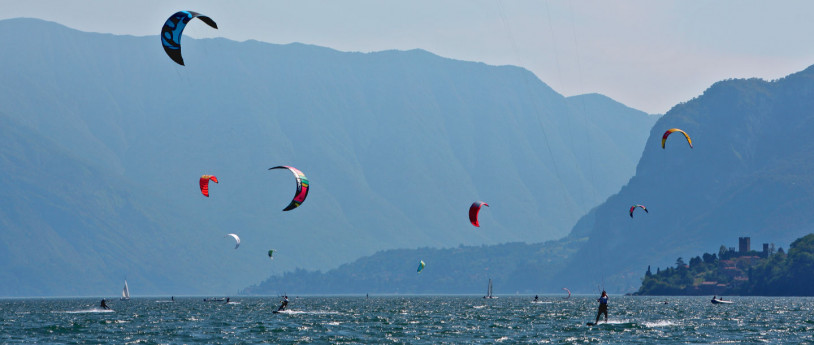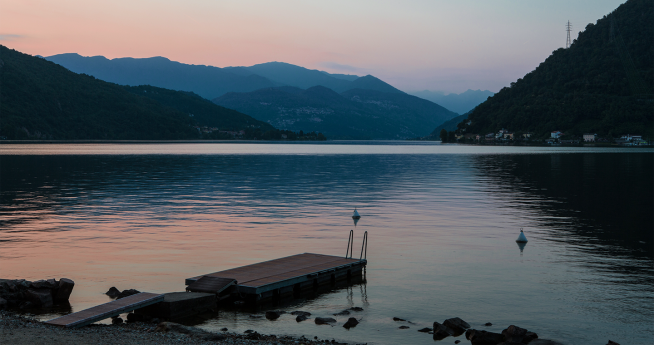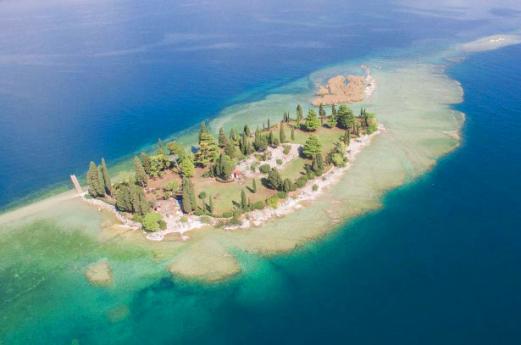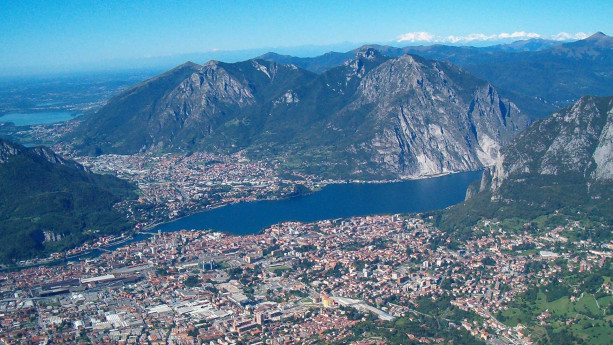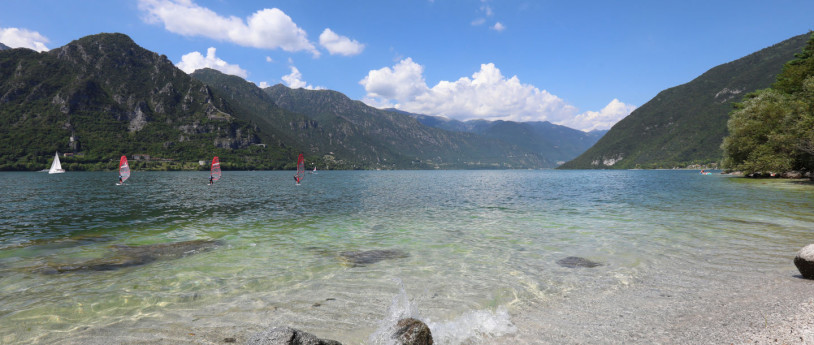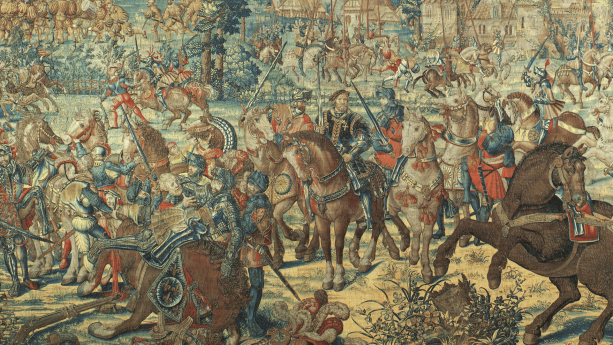- Lakes
Lago Maggiore Unspoilt landscapes
The extraordinary position of Maccagno offers a vantage point over Lake Maggiore, which we prefer to call “lago Maggiore”.
Here the onlooker’s gaze can reach out to the Swiss shore, on one side, and Stresa, on the other. The village is among the early settlements along the course of the Verbano river with a glorious past – underpinned, as the legend has it, by the hospitality given by the then Maccagno feud to Otto I in 962. In exchange, the Emperor of the Holy Roman Empire granted the feud independence, which it only lost in 1800 under the order of Napoleon. In the 17th century, Maccagno enjoyed the right to mint currency. In the lower part of the village, Maccagno Inferiore, a sanctuary juts out over the lake, Santuario della Madonnina della Punta. Another construction of interest is Palazzo Mandelli, which still retains its original towers and a few parts of its walls. The Museo Parisi Valle is a museum not to be missed. Built across the Giona river with a peculiar architecture, it hosts the works of the villager Giuseppe Parisi and his wife Wanda Valle as well as of the Italian artistic vanguard of the years1930 to 1980.
A ‘tropical’ forest
Lush vegetation, high humidity, a wide variety of ferns make the cascata di Fermona, in Ferrera di Varese, a unique waterfall surrounded by a quasi tropical landscape. The Margorabbia torrent originates from Valganna and falls 30 metres (100 ft.) down into a
calcareous rock ravine. This jump ends in a pond, where visitors can take a relaxing dip. In its upper course, close to Cunardo, the torrent sinks into a system of grottoes, i.e.
Pont Niv, Antro dei Morti, Grotte di Villa Radaelli and Grotte del Traforo. They can all be visited with the assistance of the Gruppo Speleologico Prealpino.
Piero and its mills
In Val Veddasca, time seems to stand still with a landscape of millstones, cows and goats,
to be reached by a quarter-of-an-hour walk from the forecourt of the Ponte di Piero cableway. In any case, the cableway goes up to Monteviasco. Mills dating back to the 18th century were built with stone and wood and restored in 1997. The landscape is pristine, the air is good and a few holiday farms serve local food (cheeses and cold meats) for the gourmets. At a short distance, the Giona torrent forms small spectacular waterfalls, where tourists can bathe in clean water. Braver visitors may also take a walk through a harsh trail that begins just beyond the mills and leads to an old stone bridge that crosses the river and climbs to Biegno, on the other side of Valle Veddasca.
Life in the days of yore
Do you want to take a break from civilisation? Then, Monteviasco is perfect for you. Perched on the slopes of Mount Pola, it can be reached on foot along a mule track for a total of 1400 steps to climb, or through the Ponte di Piero cableway. This village sits in the landscape with low-rise houses and their flagstone roofs and wooden balconies, winding alleyways, and rudimental stone paving (named ‘rizzada’). All around, the built area is surrounded by a wood of chestnut, beech and walnut trees. More towards the countryside, visitors can find the Santuario della Madonna della Serta dating back to 1890. In 1933 it was renovated, i.e. the octagonal building was redesigned into a Greek-cross layout. The project involved the full population including children. This sanctuary is also a pilgrimage destination and, on the last Sunday of May, a festival takes place with the traditional incanto dei canestri (auction of typical food baskets) and the participation of the music band of Curiglia.
The pleasant Luino
This municipality combines tourism, industry, history and modernity, in addition to being both Swiss and Italian. In other words, Luino is a multifaceted town with an enchanting lake front. It is also the birthplace of the Italian comedians Massimo Boldi and Francesco Salvi, the poet Vittorio Sereni and the novelist Piero Chiara, who always set his novels in Luino. These novels were partly written at a table of the historical Caffè Clerici, founded in 1875. Today a plate outside the café mentions the writer among its habitual customers.
5 reasons for
1. The Luino market. The picturesque, colourful and worldwide known Luino market is held every Wednesday and has been taking place uninterruptedly since 1541, when Charles V first licensed it. It involves the whole village with hundreds of stands. Here market goers can find a little bit of everything… garments, leather goods, haberdashery products, kitchenware and, of course, food, such as fresh cheeses, charcuterie and lake fish.
2. Formaggella del Luinese. A soft fat cheese, produced in the Varese mountain pastures
exclusively from goat’s milk. Matured only briefly, it is a recognised PDO product.
3. Pino Tronzano Beach. You will have the wind behind you in this lake beach, where visitors can practice kiting and windsurfing from the morning to the early hours of the afternoon, and take advantage of the Inverna wind that blows from the south. If all you need is relaxation, you can opt for sunbathing in the lawns.
4. Monte Lema. Placed at the border between Italy and Switzerland, the summit of Mount Lema is a privileged viewpoint over the regional lakes (lago Maggiore & lago di Lugano) and the peaks of the Pennine and Lepontine Alps. It can be reached by an easy and well signposted trail (a 3-hour walk in total including return) to be taken from the Campiglio mountain refuge in Alpe Pradecolo (Dumenza).
5. Spiaggia di Colmegna. This pebble, rock and grass beach caters for the needs of everyone, including ‘shadow lovers’ to enjoy the shade of local tree species. Cannero and Luino are also visible from the beach.
